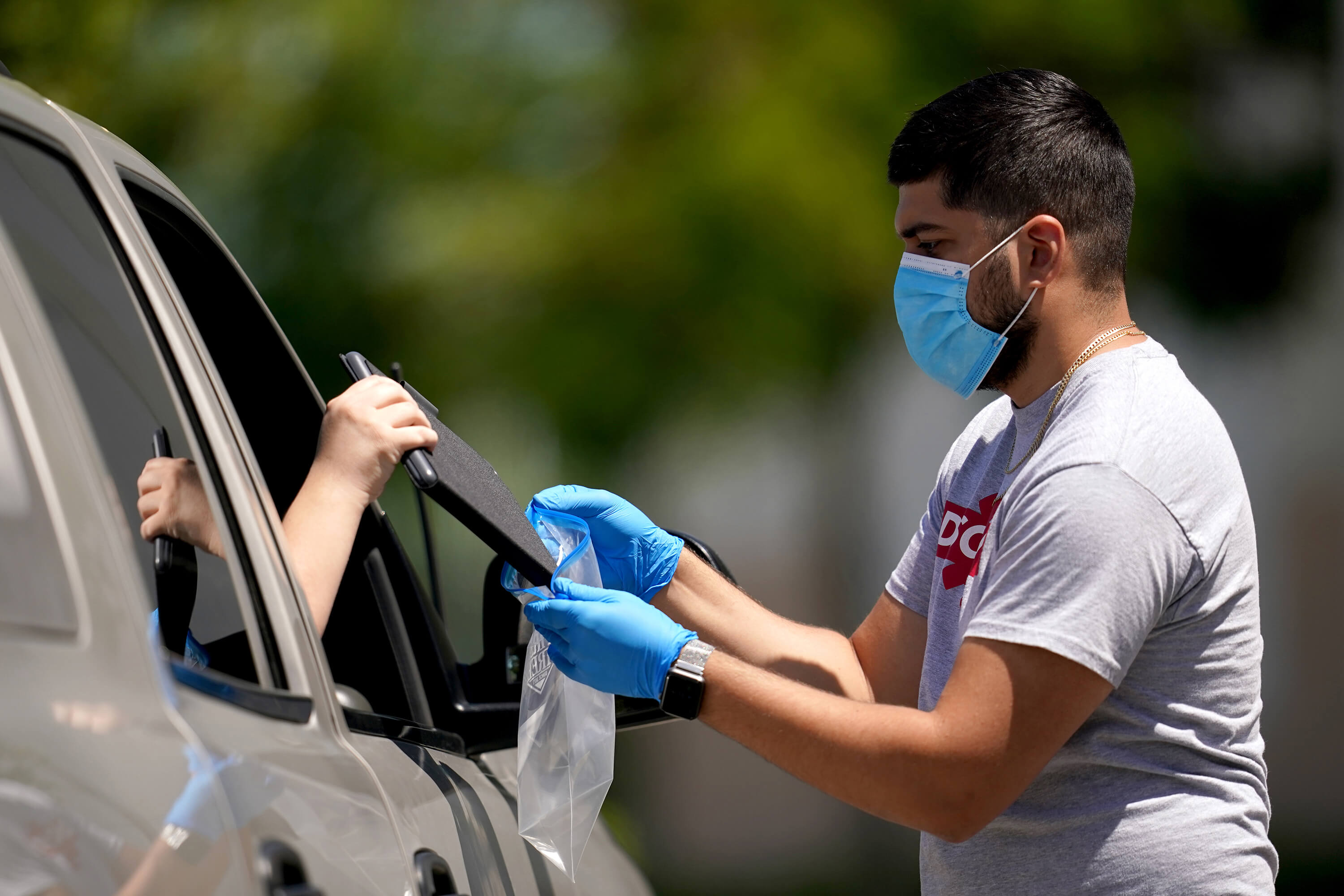The CSU is known for serving one of the most diverse student populations in the country. Nearly half of all students are Pell-eligible, meaning they come from low-income groups that may have less access to the technology needed for successful online learning. At Cal State San Bernardino, for example, an estimated 600 students across the campus need technology assistance for virtual classes so they can progress toward their degrees.
Recognizing that need, the CSU has invested millions of dollars to provide students with digital equipment and services. During the spring and fall terms, campuses distributed more than 21,000 laptops and tablets and 10,000 mobile Wi-Fi hotspots, totaling more than $18 million in new equipment and several million more in existing equipment for student use. In addition, the CSU secured a gift of 2,300 Logitech headsets in August to support the virtual learning experience for students throughout the university and help them concentrate on their studies.
And at the campus level, Fresno State’s DISCOVERe program distributed 4,290 iPads and 3,170 Wi-Fi hotspots to students for the fall 2020 term alone. Student volunteer Armando De Alba, who helped distribute the equipment, says, “It’s really cool to create that equality for all students. Not just people who have the resources but the people who don’t, so they can get a fair shake as well.”
In addition to lending thousands of Wi-Fi hotspots, campuses are spending hundreds of thousands of dollars per month to cover the cost of service and are providing spaces on campus where students can access Wi-Fi at no cost.
At this time, at least eight campuses are providing free Wi-Fi in their parking lots, and many more offer other outdoor locations where students can access Wi-Fi, provided they follow campus safety guidelines. At San Diego State, students can use Wi-Fi at the Love Library patio and Cal State San Bernardino has designated outdoor Wi-Fi areas on its main campus and Palm Desert satellite campus.
Some campuses are even able to provide indoor study areas by reconfiguring spaces typically used for large gatherings. “Perhaps one of the more innovative uses of space during the pandemic has been in the ballroom,” says Sonja Daniels, associate vice president for campus life in the Division of Student Affairs at San José State. With no large presentations or ceremonies occurring, administrators decided to repurpose the facility and create a “Student Specialized Instructional Support Center.”
CSU San Marcos also repurposed their University Student Union ballroom to set up a computer lab, giving students access to computers, printing services, power and Wi-Fi, and Cal State East Bay offers study spots by reservation in the Library Learning Commons.
Additionally, campuses are giving free remote access to software they could normally only use on campus computers, like Adobe Creative Cloud, Dropbox and Microsoft 365, as well as software specific to art and science courses. CSU Channel Islands, for example, offers students access to the Virtual Computer Lab and its suite of free software every day from 6 a.m. to midnight.
The CSU also made effective use of its systemwide contract with Zoom, one of the university’s main course delivery platforms. The contract extends the use of this software to students for free, enabling them to set up their own meetings, organize study sessions and more.
Campus libraries are also playing a big role in supporting students’ needs. Library staff at Cal State LA, for instance, collaborated with Information Technology Services, Student Union, Housing and Residence Life and the Dean of Students to distribute technology equipment and create meaningful connections with new students.
Over the summer, the campus reached out to new incoming students by phone to find out how they were doing, ask about their technology needs and let them know they were excited to welcome them to the Golden Eagle family. When classes started, the library created an ambassador program of employees to continue to reach out.
“The pandemic has forced us to reexamine traditional support services,” says Juan Carlos Rodriguez, Cal State LA Library dean and chair of the CSU Council of Library Deans. “The old model was to be available for students when they came to you, but now we’re asking ourselves how we can reach students directly, track their progress and intervene if they’re in danger of falling off track. The entire university is coming together to form a holistic network of support and instill a sense of belonging in students.”
SDSU Connects is a similar program that launched this summer to proactively reach out to students and offer support. Those efforts have continued this fall with phone calls, emails and text messages to connect with students on a personal level, specifically to link them with the support and services they need to be successful.
Creating a deep connection to the university is critical to a student’s academic achievement and to maintaining progress to degree, priorities that align with the university’s Graduation Initiative 2025 goals.
“We’re more engaged with our students now than we ever were in the past—being more intentional and improving advising strategies,” says Rodriguez. “And what we’re doing right now will only continue to grow when everyone comes back to campus.”
Learn more about how the CSU is supporting students and enhancing online education during the current pandemic.



